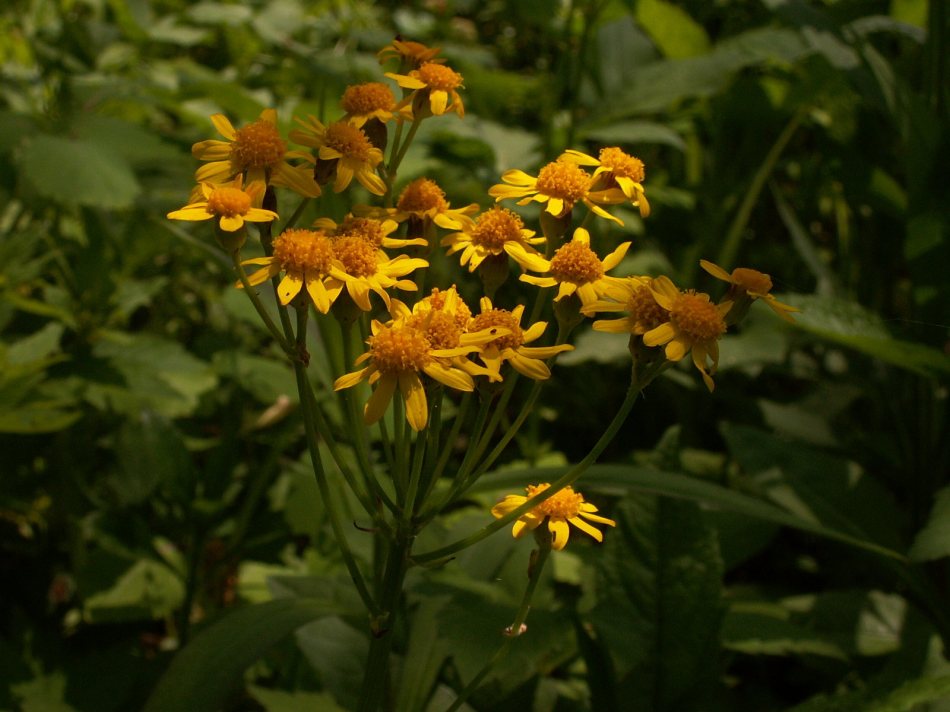Now Packera aurea, but the old name is so much better known that most Internet searchers are not likely to find an article on “Packera.”
Golden Ragworts are attractive flowers, a bit like a yellow aster, that bloom in the middle spring, just after the tulips in your garden. The heart-shaped basal leaves and the pinnately lobed (rather fern-like) stem leaves are distinctive. They like a somewhat shady location; these were blooming in late May (a little later than usual this year) near a stream in Scott Township.
A peculiar property of Golden Ragworts is their resistance to the autofocus systems on most digital cameras. If one does not resort to manual focus, it takes a great many pictures to get a few that are decently in focus. If you are a graduate student in evolutionary biology, here is a thesis topic for you.
Gray (with help from J. M. Greenman) describes the genus and the species:
SENECIO [Tourn.] L. GROUNDSEL. RAGWORT. SQUAW-WEED. Revised By J. M. Greenman. Heads many-flowered; rays pistillate or none; involucre cylindrical to bell-shaped, simple or with a few bractlets at the base, the bracts erect-connivent. Receptacle flat, naked. Pappus of numerous very soft and capillary bristles.— Ours herbs, with alternate leaves and solitary or eorymbed heads. Flowers chiefly yellow. (Name from senex, an old man, alluding to the hoariness of many species, or to the white hairs of the pappus.)
S. aureus L. (GOLDEN R. ) Stems erect from rather slender rootstocks, 3-8 dm. high, at first often lightly floccose-tomentose, soon glabrate; lower leaves long-petioled, ovate-rotund to slightly oblong, 1.5-8 cm. long, two thirds as broad, crenate-dentate; stem-leaves lyrate to laciniate-pinnatifid; the uppermost sessile, amplexicaul, often bract-like; inflorescence cymose-corymbose; heads radiate; rays yellow; achenes glabrous. — In wet meadows, moist thickets, and swamps, Nfd., s. to Va., w. to Wisc., Mo., and Ark. May-Aug.

